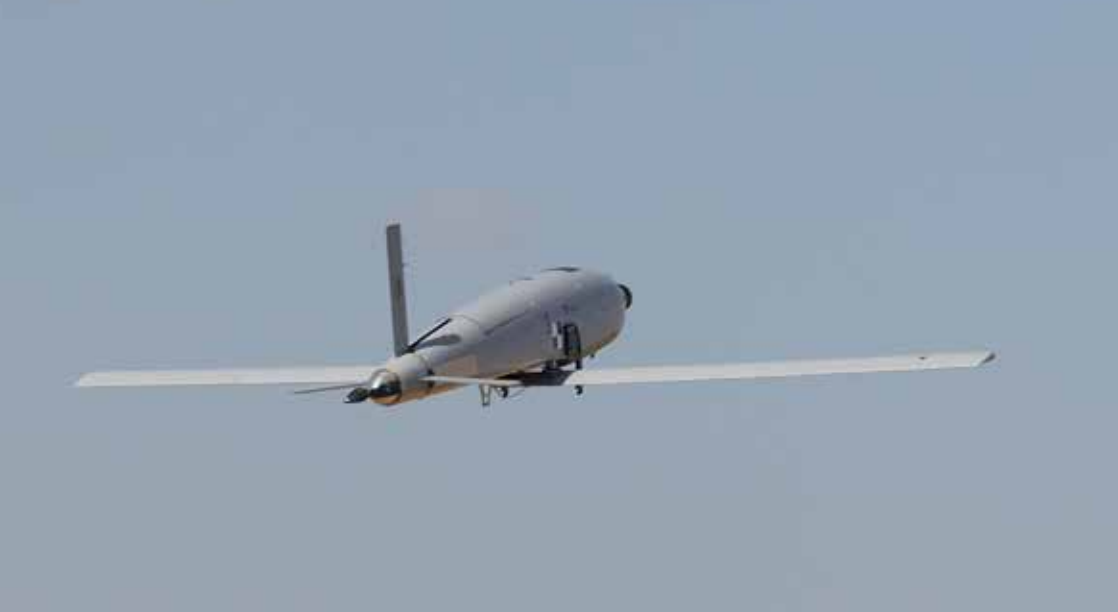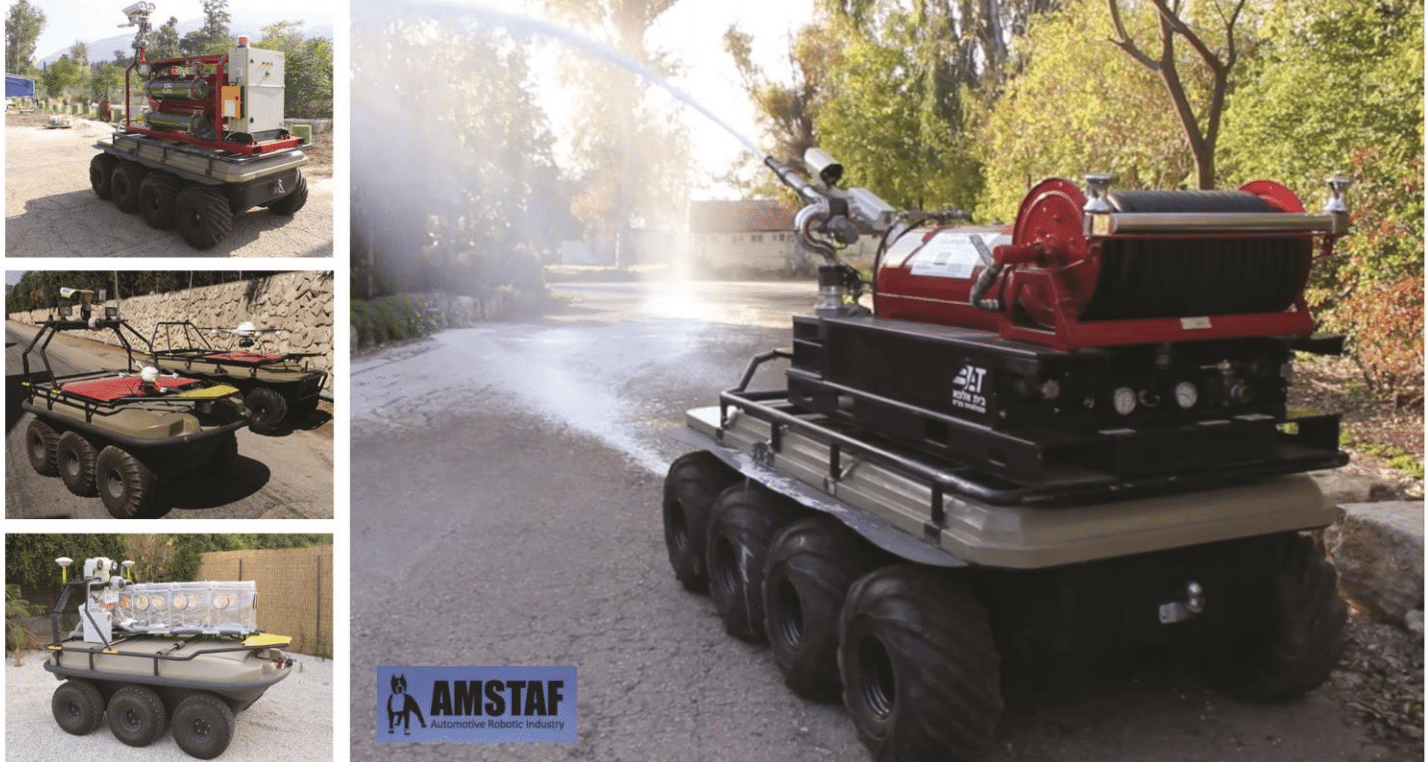As we’ve done with our article on AI at the top 5 US defense contractors, this report discusses the artificial intelligence initiatives at the top four military defense contractors of Israel by revenue. Although Israel is a nation just 70 years old, it possesses one of the most modern militaries in the world.
Despite Israel’s small size and budget (relative to the large superpowers of the world), about 4.5% of its GDP is spent on research and development, almost twice the OECD (Organization for Economic Cooperation and Development) average. As a comparison, only 2% of German R&D and 17% of US R&D is for the military where 30% of Israel’s R&D is spent on military products.
As a result, it follows that modern innovation and research in artificial intelligence for defense would then be welcomed by the Israeli Defense Force.
This report on the military applications of AI at 4 of Israel’s largest military defense contractors covers the following four applications:
- Elbit – Autonomous Loitering Munitions Drone
- IAI – Autonomous Perimeter Patrol Drone
- Rafael Advanced Defense Systems – Missile Targeting
- IMI Systems – Autonomous Vehicles
This report is intended to show the various capabilities currently in the works at Israel’s defense contractors; those very same companies are likely to have additional machine learning technologies they are currently working on given their research and development budgets.
The majority of the initiatives outlined in this report are autonomous vehicles, and so first we will begin with a primer on how they work:
Autonomous Vehicles
The machine vision aspects of the self-driving land vehicles are trained at first using a supervised learning process. Autonomous vehicles are trained with numerous mounted cameras all around them at various heights and angles that allow it to detect how the vehicle is moving from every perspective.
The software is trained on thousands of hours of human remote driving footage showing the proper and safe way a vehicle should operate from various angles, in various lighting conditions, and in different weather conditions.
Certain aspects of this footage would have been labeled as key indicators of something while driving, a bounding box that the AI would have to recognize as an important concept or rule to follow; a stop sign indicates a stop, dotted white lines on the road can be crossed by this or other vehicles.
Vehicles with military applications will not have to adhere to road law as closely. Machine vision in combination with other sensors on the craft can detect roads likely to cause skidding or hydroplaning when traveling.
This labeled footage would then be run through the software’s machine learning algorithm. This would have trained the algorithm to discern the sequences and patterns of 1’s and 0’s that, to the human eye, form the video of a car safely driving as displayed in the mounted camera video.
Combining this machine vision data with data from sensors, such as acceleration data or lidar data used for tracking the current distance the lidar is from the objects around it, allows the autonomous vehicle to be trained more comprehensively then using just machine vision data alone. Discover additional information on autonomous vehicles and their civilian applications in this recent timeline.
The vehicle could then get a command to drive to a location that is not labeled into its software. The algorithm behind the software would then be able to drive the vehicle and accompanying passengers safely to the determined location.
An example of a generic autonomous vehicle solution applied to military problems is the AMSTAF, produced by IMI System in Israel.
We will begin the breakdown of Israeli defense contractors starting with Elbit, as the largest defense contractor by revenue.
Elbit – Autonomous Loitering Munitions Drone
Elbit is the largest Israeli military defense contractor, reporting $2.28 billion in revenue in 2017. Elbit offers the Sky-Striker, an autonomous loitering munitions technology, which it claims can help militaries make covert and precise airstrikes on targets by utilizing a machine learning powered autonomous device.
Loitering munitions are launched weapons that are able to linger in the air as they acquire the appropriate target. The earliest form of loitering munitions was explosive-laden, piloted vehicles, or “suicide bombers.” Loitering munitions technology today, with or without artificial intelligence, has since advanced to a point that human piloting is no longer necessary.
Sky-Striker uses machine vision to function the same way as an autonomous vehicle. The done needs to meet certain design and performance before it sees use in military operations. For example, its operators need to sustain communication with the drone. Elbit claims the Sky-Striker can be successfully ordered not to detonate. Sky-Striker can also be ordered to return to the launch page if it can’t identify its intended target.
Sky-Striker uses machine vision to identify, track and acquire its intended target while in flight. We can infer that Elbit’s machine learning model for the targeting camera aboard were trained on thousands of images and videos showing human faces and bodies at multiple angles and in multiple lighting conditions.
The company might train the software on facial images and videos of persons of interest that are collected from their social media or records in a government database. These images and videos would be labeled as the person. They would then be run through the machine vision algorithm millions of times, and the algorithm would eventually “learn” that the array of pixels that make up those images and videos likely correlate to the person’s identity.
As a result, when a person of interest walked in front of the field of vision on Sky-Striker’s camera, its operator would receive an alert on their computer screen showing the person of interest.
The operator could then verify that the person of interest is indeed the person in Sky-Striker’s field of vision. They could then order Skystryker to engage or return to base.
We could not find any video demonstration of Sky-Striker. Below is a photograph of Sky-Striker in flight:

Elbit does not seem to have any contracts brokered for Sky-Striker currently and it is currently not in use by any world military. Sky-Striker was revealed in June of 2017 at the Paris Air Show in Le Bourget.
IAI – Autonomous Perimeter Patrol Drone
Israeli Aerospace Industry, or IAI, is the second largest Isreali defense contractor in the world. IAI offers numerous products with AI functionality, one of them an autonomous perimeter patrol drone. Guardium is an autonomous perimeter patrol drone, which IAI claims can help help secure facilities cut costs on security patrols and resources.
IAI refers to Guardium as an unmanned security vehicle, or USV because it operates on wheels and not in the air, like traditional UAVs. Another report covers an additional set of autonomous vehicles manufactured by IAI for the Israeli Defense Force.
Guardium has the ability to travel at up to 48 mp/h to intercept intruders on a fence & border perimeter before security personnel can arrive and increases protection without requiring a massive deployment of resources. IAI claims the Guardium operates on an expert system platform rather than the more modern machine learning system. Expert systems were once the prevailing form of artificial intelligence, but its inherent limitations were quickly encountered by developers.
Expert systems are covered in greater depth in our breakdown of the difference between machine learning and artificial intelligence. In short, an expert system is a large web of if-then scenarios through which a query is filtered to achieve some preprogrammed end response or result. The if-then statements behind an expert system are coded into the software and as a result, the AI will respond to certain inputs the same way every time.
IAI mentions numerous security professionals collaborated with data scientists to build the machine learning behind the drone. Such collaboration is often necessary when building both expert systems and machine learning for industry.
In order to build an expert system to know what to do when the camera aboard the USV identifies an intruder on a perimeter, IAI needed to somehow base the software’s if-then scenarios on what an expert in perimeter security might do when presented with the same scenario.
The use of an expert system in the present days is somewhat surprising. The system could use the perimeter it patrols as a governing framework for a rules-based system. The USV’s can use the perimeter of the facility it is guarding to help govern the USV’s internal series of if-then rules. This may reduce the number of if-then rules the USV algorithm needs to account for.
IAI claims the Guardium has been in use at the Israeli border since 2008 and was considered for deployment at Ben-Gurion International Airport, Israel.
Rafael Advanced Defense Systems – Missile Targeting
Rafael is the third largest military defense contractor in Israel and offers the least products that leverage AI. Rafael seems to focus its product offering on artillery, ammunition, and other explosives. The company does claim to leverage AI in the inferred tracking element of the GIL 2 missile, but the company’s website does not provide much information.
Below is a computer rendering of the GIl 2 missile:

Rafael claims one advantage of the GIL missile is its ability to be fired without line of sight to the target, allowing the airborne UAV to “see” the target and guide the missile. The UAV provides a grid of information to its operator, allowing them to select its target.
That said, Rafael does very little to explain how the GIL 2 missile leverages AI, and so we can not confirm our inference.
The Israeli Defense Force currently uses the GIL 2 missile system.
IMI Systems – AMSTAF Autonomous Vehicle
IMI is a 4,5000 employee company entirely owned by the government of Israel and is Israel’s fourth largest defense contractor by revenue. IMI offers AMSTAF, an autonomous unmanned ground vehicle, which it claims can help reduce human risk and the cost of numerous military operations, such as scouting, surveillance, tracking, and patrolling.

AMSTAF can also be equipped with gear to aid operators in military activities such as riot control, fire extinguishing, and combat. In addition, AMSTAF can operate both via remote control at 12 mp/h or autonomously at 4-7 mp/h.
Header Image Credit: Ministry of Defense, Greece



















